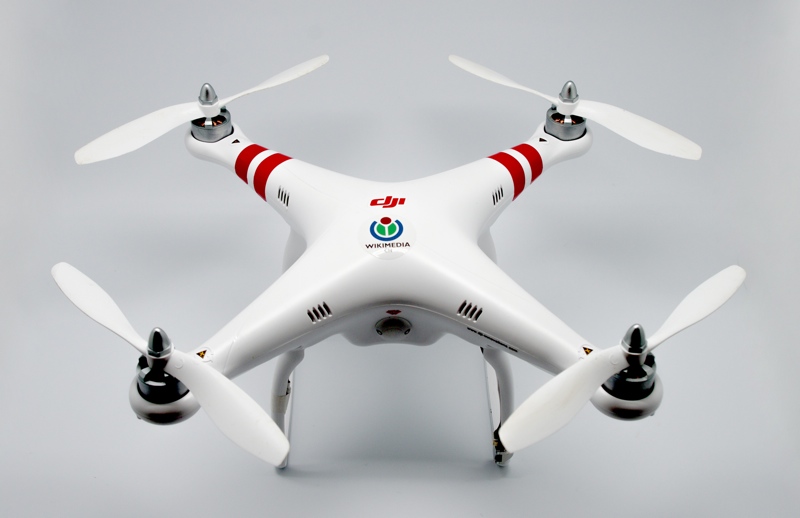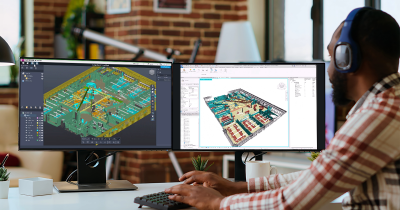8/17/16: Since publication it became apparent that we should provide some clarification to the terminologies that we are using—including professional certification and licensing—we have updated the piece to reflect this. You’ll find it in the “necessary context” section below.
Unmanned Aerial Vehicles (UAVs), or drones, show aspects of the landscape that quite simply could not be observed with “boots on the ground,” or even from a large manned helicopter or airplane. They are also more accessible than manned operations because they require lower equipment expenditure costs and present potentially lower licensing and certification requirements.
UAVs now give almost anyone the opportunity to collect his own aerial 3D view of the landscape. As such, they are fueling a dramatically expanding industry, and they are helping firms to undertake projects that might not have been feasible without the availability of UAVs. In terms of providing of both providing new 3D imaging tools to the geospatial professional, and increasing the awareness of services that the geospatial and surveying industries can provide, this is all good.
When so many project decisions are based upon cost, what are the implications of utilizing UAV based methodologies? Are we really seeing lower barriers of entry to use these services?
Necessary context
Firstly, to address some context. In countries such as the United States, surveying is a licensed profession—though this is not necessarily the case in all countries. Even in countries where surveying is a licensed profession, though, a team that does not posses a survey license can still collect aerial imaging data for measurement or asset management purposes. Consequently, in this discussion I will use terms such “surveying” and “geospatial imaging” interchangeably.
We should also not forget that professional approaches are required for safe UAV flight operations, regardless of payload. The licensing and qualification requirements for flying UAVs are evolving, especially in the United States, as authorities better understand the implications of bringing UAVs in to our airspaces. To describe these considerations in detail requires an outlet that goes beyond these blogs, and so I will be trying to keep our discussion focused on geospatial imaging applications.
Can anyone call themselves aerial surveyors?
To take an example, in my regular work with survey or 3D imaging firms, I increasingly hear worries about end-customers who spend little over $1000 on a low-cost drone and camera to reproduce the same work they had previously contracted out to the 3D-imaging firm. Not only might this lead to a service provider losing a contract, it can also bring into question the value of the services that they previously delivered.
Even though the type or quality of the product delivered might be different to the one produced traditionally (even if the term is used loosely), UAVs mean that more people can call themselves aerial surveyors.
Are UAVs easier to acquire and easier to use?
I was discussing the use of UAVs with an industry colleague recently, who exclaimed:
“…Few technologies have given rise to so many amateurs trying to be professional…”
That is, it is potentially easier for a wider variety of professionals to provide 3D imaging or survey services using a UAV. This is because it is becoming easier
- To fly
Due to evolving flight regulations (especially in the US), there are an increased number of UAV operators flying aircraft, many of whom might not have been to flight school. - To capture
We are also seeing an increased number of “survey” services being provided by firms whose existing expertise is in flying UAVs with variety of payloads—not surveying. - To process
The software is becoming easy enough for anyone to use. The workflows for georeferencing data and generating point clouds and products (such as orthophotos) from camera imagery are now both relatively automated and well developed. The complex mathematical operations required to produce these products that 20 years ago might have required the use of a high-end specialist workstation can now be completed via a simple graphic user interface on a fairly powerful laptop computer.
What Does this Mean for the Industry?
We are working in an age where pretty much anyone can purchase a UAV platform, camera and software and then use them. For now, I will let the UAV flight operations specialists discuss the implications of anyone being able to fly a UAV without the same level of training as a regular pilot
Instead, I would like to ask: Now that anyone can use UAVs, are they really leading to increasingly efficient survey services? Are they bringing better products to the end customer?
Since projects can now be delivered by teams that have not had geospatial or survey training, this means that firms can potentially investing less in training, equipment, or overall project costs than they would when using more traditional airborne or ground-based methods.
Will this mean the overall project costs will really be cheaper than before, and will UAV capture now be a go-to method of 3D data collection? That will be the topic of next week’s blog.









